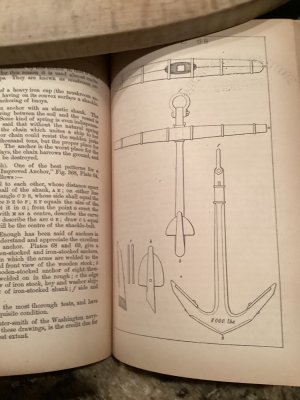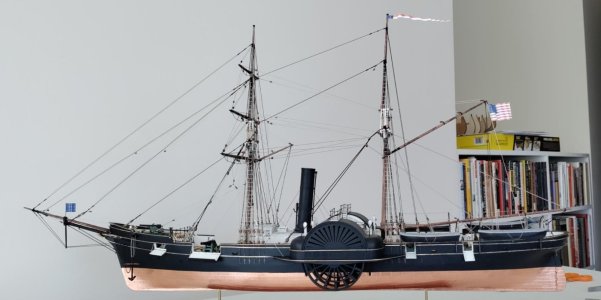- Joined
- May 25, 2020
- Messages
- 772
- Points
- 353

Chuck,
I looked up your chain cable question in Harland’s Seamanship in the Age of Sail. I find Harland’s book to be frustrating as ge goes to great lengths on topics except those for which you are seeking an answer.
Anyhow. Here’s what I was able to glean about anchors and cables. He says, “The anchor rings used with hemp proved to be quite unsuitable when used with chain and had to be replaced by a much smaller and stouter shackle better able to resist the concentration of strain at one point.
An engineer’s understanding of this. An advantage of hemp cable was its elasticity. Under load, the cable’s twist would tighten and the cable would stretch. Chain cable is much stronger than hemp so rather than stretch elastically the load would be transferred along the cable to its weakest point. This would be the ring attached to the anchor.
Roger
Even today, many boats use a chain "leader" between the anchor and anchor rode (which is normally nylon) because the chain's weight lays on the bottom helping the anchor dig in. By the 1850s, metal was all the rage, wire rope was coming into use, chain everything; sheets, bobstays, anchor rode, warships and many clippers had rigging-screws (turnbuckles) instead of dead-eyes and lanyards, even chain armor.
If the Lane didn't have a full chain anchor rode, it was likely because of weight. A half-mile of chain for 4 anchors is a LOT of weight compared to rope, in a sharp-bowed boat with two cannons already mounted forward. Each would likely have a few fathoms of chain leader.
The rope rode would probably have a thimbled eye shackled to the chain, and the anchor ring itself would be a bow shackle. The chain link at the anchor was larger so the end of the shackle would fit through it, or another, smaller shackle connected the chain to the anchor shackle.
With the anchors catted and stowed, you probably would only see their chains, and not the rope rodes.
View attachment 508717
Roger! Jerry! Perfect! Thank you both for coming through with the straight poop! I knew you would. I was so sure that I had no problem holding my breath until you did!
Roger, I really appreciate the explanation of why the "ring" should be different to account for the properties of hemp versus chain.
Jerry, you treasure chest, helpful as always. Based on your prior input to my build I understood the rage for metal as you proposed that Harriet Lane likely had rigging screws rather than deadeyes and lanyards. Your scale image, thank you, is also helpful understanding the proportions of the anchor including the thickness of the shank. A while back I posted my concern that the kit supplied anchor seemed a bit anemic relative to the size of the ship. I have a little sailor to compare it with and can make my decisions based on what my eye tells me. Looks like the anchor is "two sailors tall" from the bottom of the crown to the top of the shank. And the shank is something less that 1 sailor thick.
Thank you both for sharing your store of resources and knowledge!
Blessings. Peace. Gratitude.
Chuck

 ) to set the lids, it dawned on me that I might have trouble getting the ropes to reflect that they were carrying the weight of the port lids. Well, I thought, I'm sure it will work out. And it did!
) to set the lids, it dawned on me that I might have trouble getting the ropes to reflect that they were carrying the weight of the port lids. Well, I thought, I'm sure it will work out. And it did!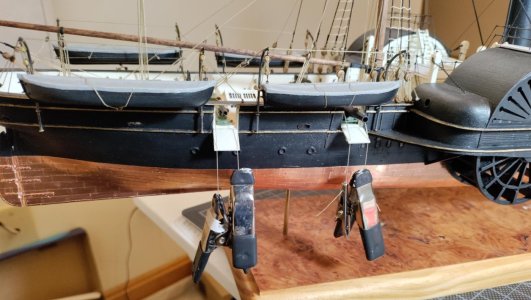
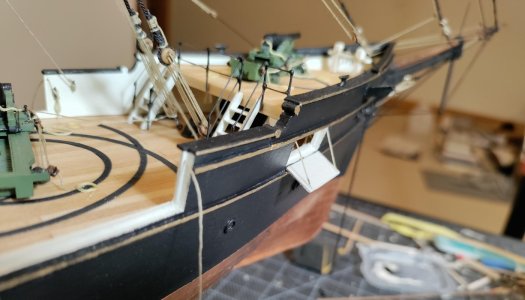
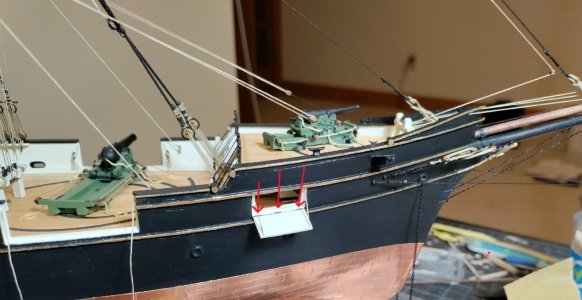

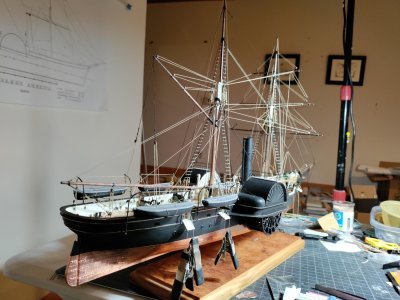

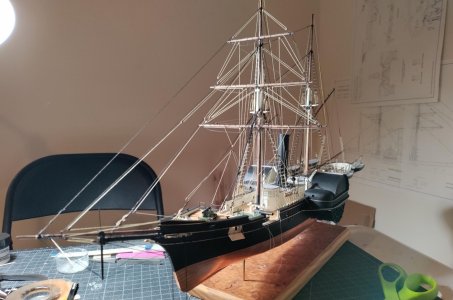




 s were classed by weight, and the weight issued was based on the vessel’s tonnage. I believe that this is register (volumetric) tonnage, not displacement. Once the weight has even determined, the book provides formulae for calculating the anchor’s proportions.
s were classed by weight, and the weight issued was based on the vessel’s tonnage. I believe that this is register (volumetric) tonnage, not displacement. Once the weight has even determined, the book provides formulae for calculating the anchor’s proportions.